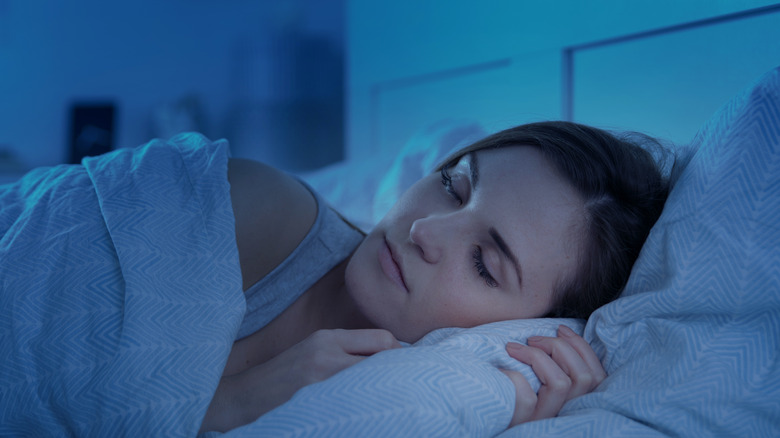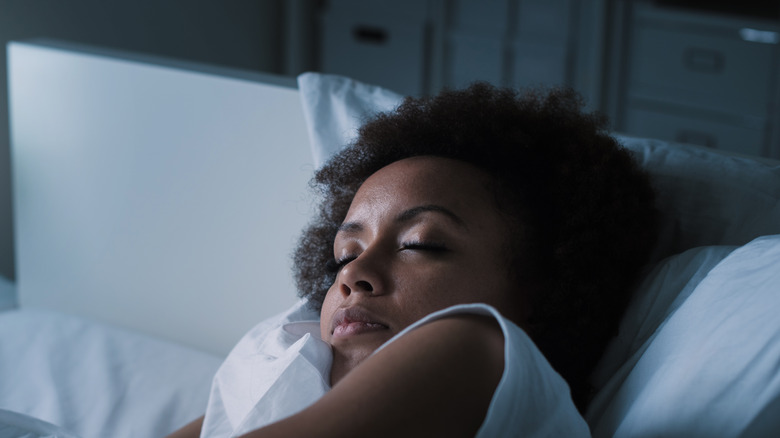Why Your White Noise Machine Might Not Be Helping You Sleep
It comes in pink, brown, and white. No, we're not talking about ice cream or fashion accessories — we're talking about noise, which is the sound generated by music, traffic, people's chatter, horns blaring, or jackhammers going off. While noises keep us awake, certain types also put us to sleep, which explains the popularity of white noise machines. White noise machines were born when a traveling salesman built a noisemaker to help his wife sleep; she had gotten used to falling asleep to the hum of motel air conditioners and couldn't settle when she got home (via New York Times).
The National Sleep Foundation says white noise is what cuts the difference between regular background sounds (like crickets chirping at night) and a "peak" sound, like a door slamming or someone dropping and shattering a plate in the middle of the night. Param Dedhia, director of sleep medicine at the Canyon Ranch calls the effect of a noise machine "auditory masking." He notes that it creates a sound bubble of sorts, which means other sounds have to be way stronger to actually break through and disturb your slumber.
While these machines can help you sleep, they don't always work for everyone. Why not?
How different shades of sound affects our bodies
The Sound of Sleep says "white noise" is not the only noise with color out there, and they can all affect our bodies in different ways. There is pink noise (white noise with a slightly lower pitch) which sounds like soft rainfall or whistling wind. There is also brown noise, which sounds like the rumble of ocean waves or the howling of stronger winds. The three don't work the same way — white noise may be beneficial for people with memory and concentration problems and tinnitus, pink noise may help memory retention, and brown noise is associated with relaxation, better focus, and better sleep. Michael Grandner, director of the Sleep and Health Research Program at the University of Arizona, describes pink noise as a "hiss," and brown noise as a "shush" — and white noise falls somewhere in between the two (via Time).
But Time notes that research shows no one noise is better than the other when it comes to helping someone catch those needed zzz's, which is one reason why just any old white noise machine might not work for everyone. Also, the use of white noise machines is somewhat controversial, according to Grandner. He says, "Biologically, you don't need this to sleep, and if you use it every night, you can get so used to it that you can't sleep without it." Basically, he believes a white noise machine is just a crutch that helps support a pretty harmless dependency, because as he puts it, there is no research out there that supports the absolute need for white noise machines.
But at the end of the day, it's really all about what helps you get a good night of sleep, and if your white noise machine or app (which may come bundled with brown and pink noise options) gets you there, go for it. It may just take some time to find the perfect noise that helps you drop off to a peaceful slumber.

